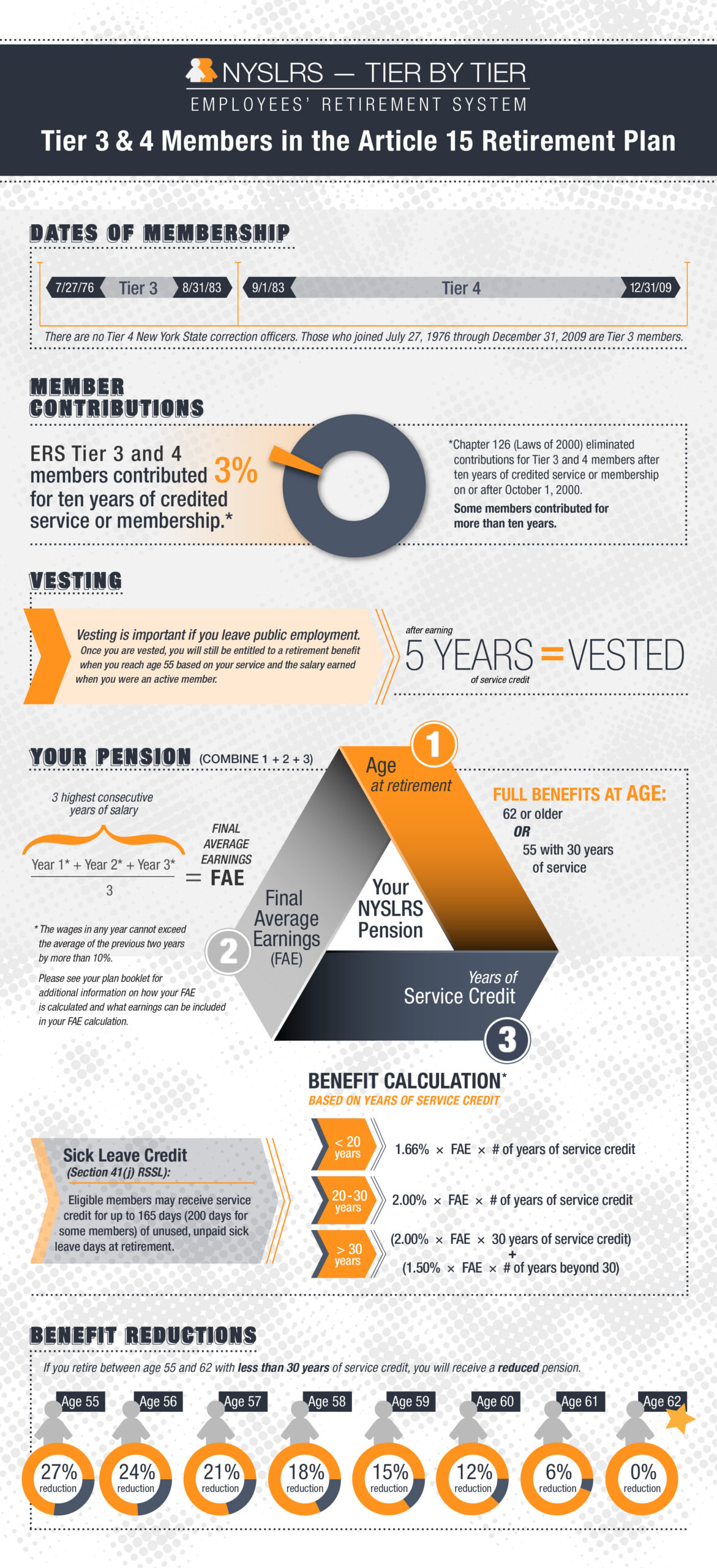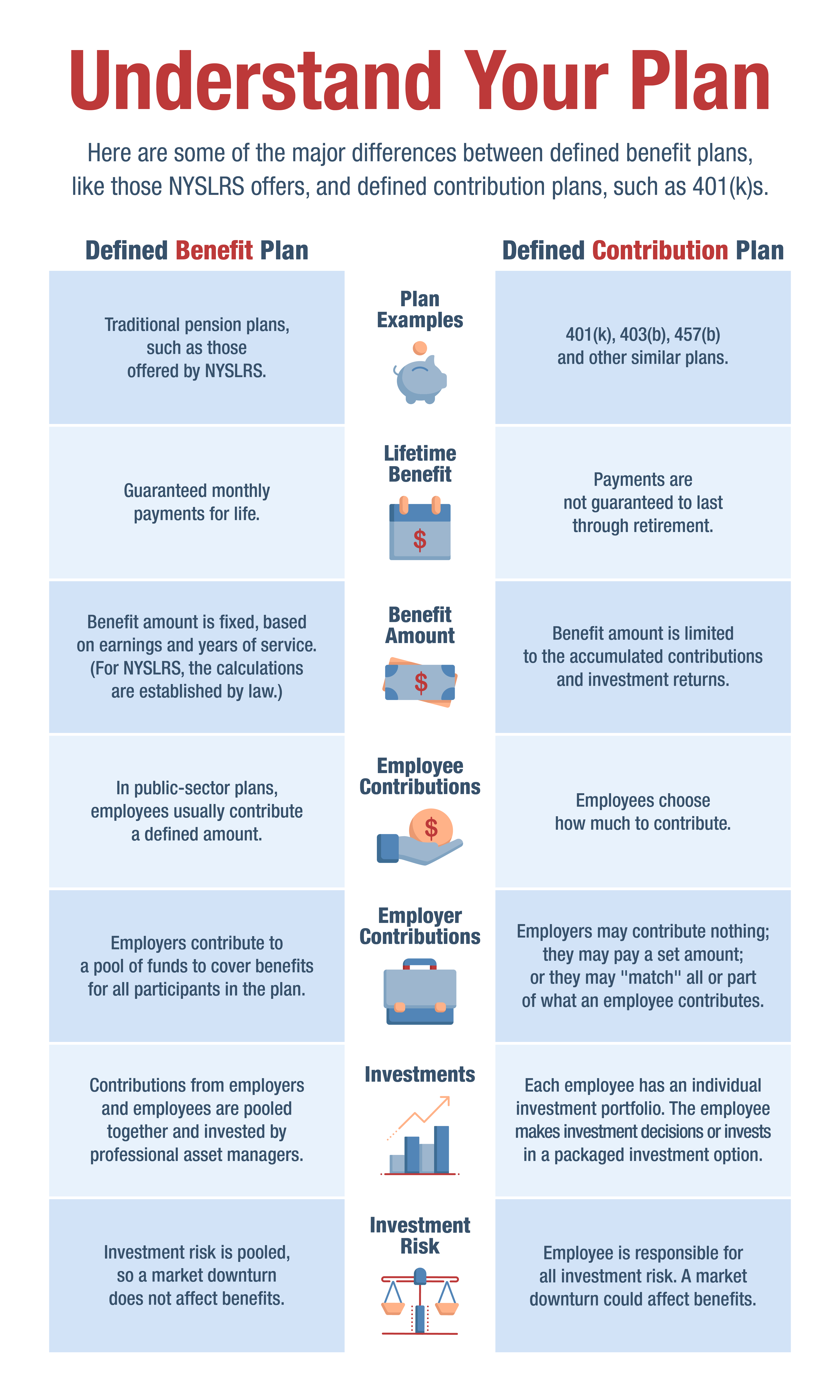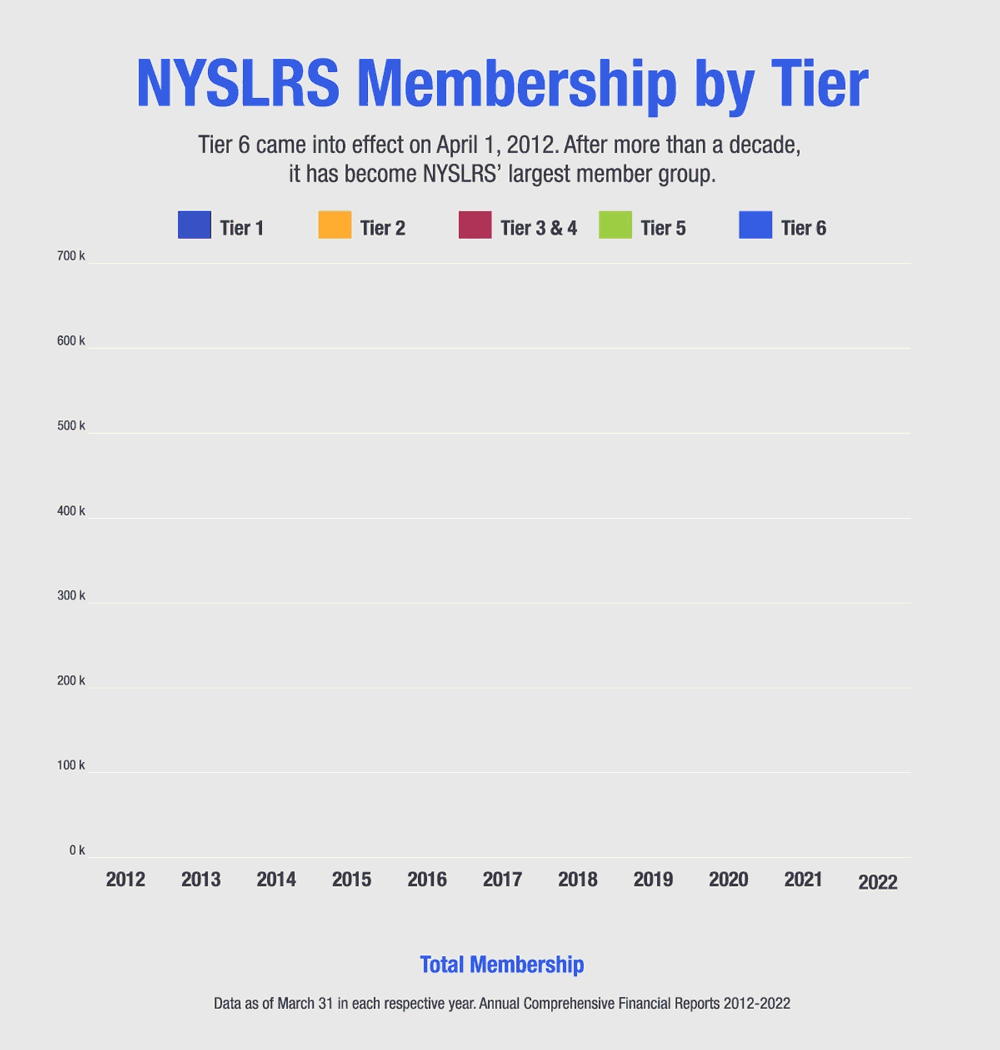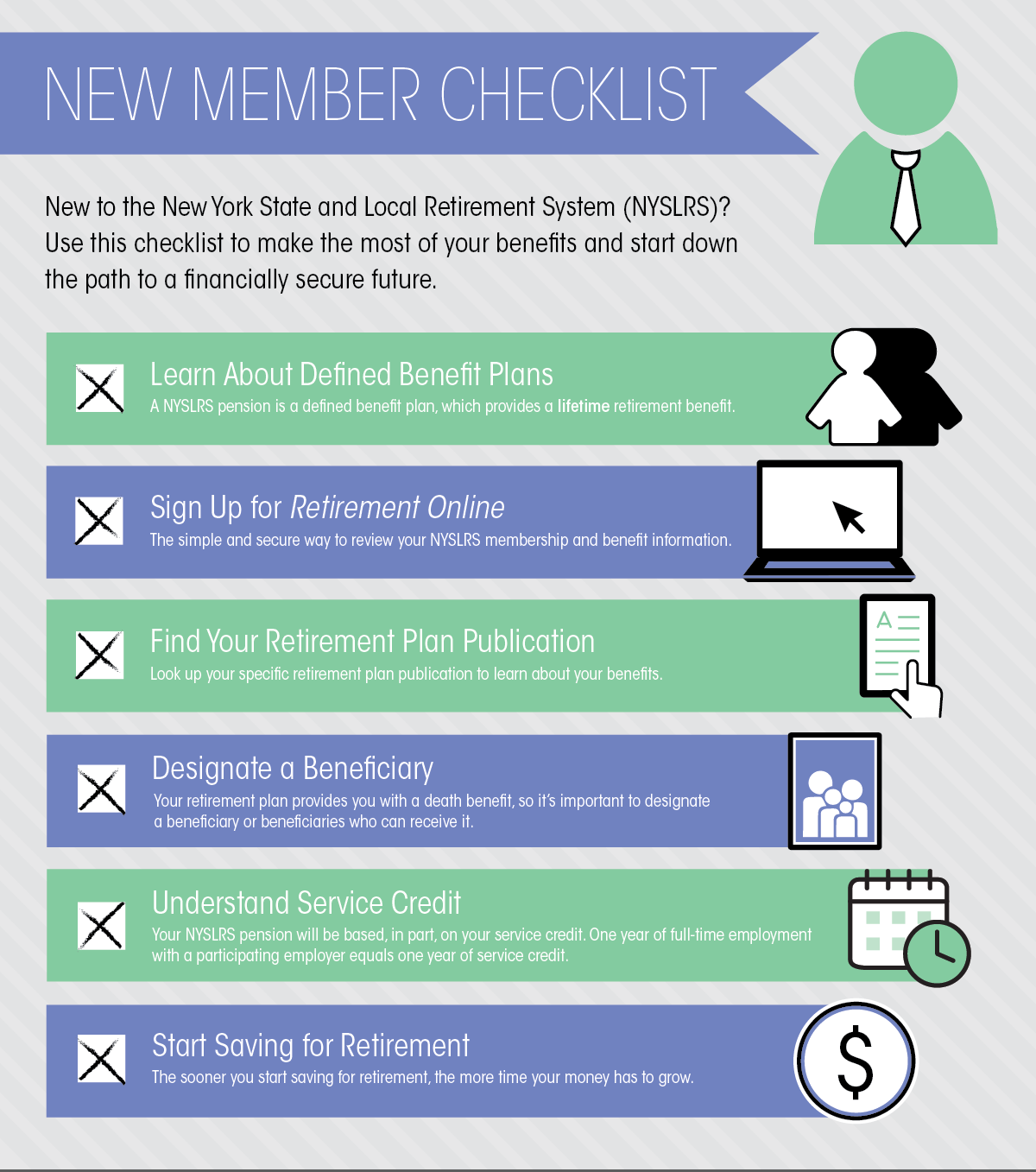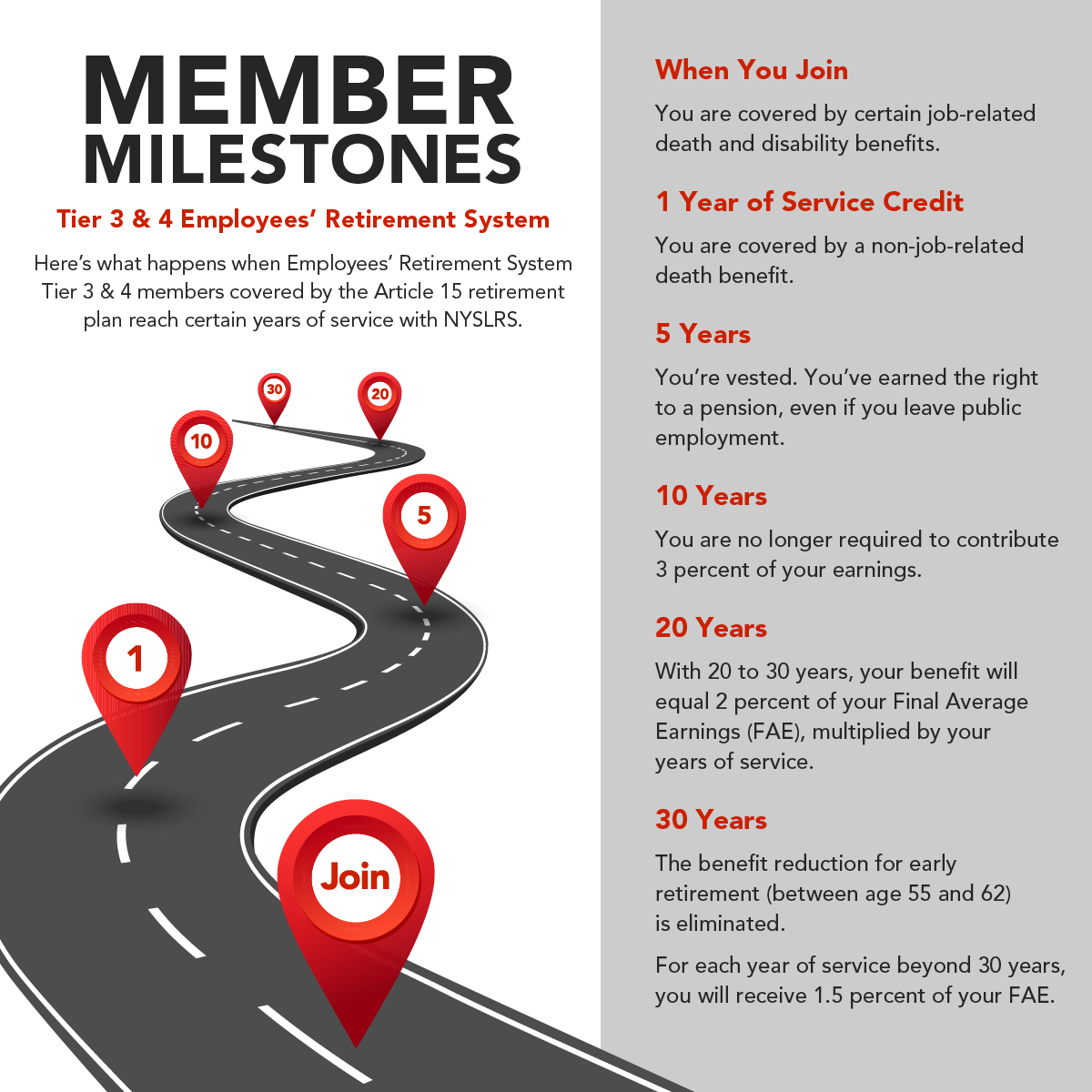If you joined the Employees’ Retirement System (ERS) on or after April 1, 2012, you are a Tier 6 member. Let’s look at the milestones you will reach over the course of your public service career and how they will affect your benefits.
Why Milestones Matter
As a NYSLRS member, you earn service credit for your paid public employment. Generally, one year of full-time work equals one year of service credit. As you earn service credit, you’ll reach career milestones that will make you eligible for certain benefits or for improvements to your existing benefits. Understanding these milestones and when they occur will help you better plan your career and retirement.
Your milestones depend on your tier and your retirement plan. Most ERS Tier 6 members are in the Article 15 retirement plan (named for a section of the New York State Retirement and Social Security Law). If you see Plan A15 listed in the ‘My Account Summary’ section of your Retirement Online account or in your annual statement, you’re in this plan.
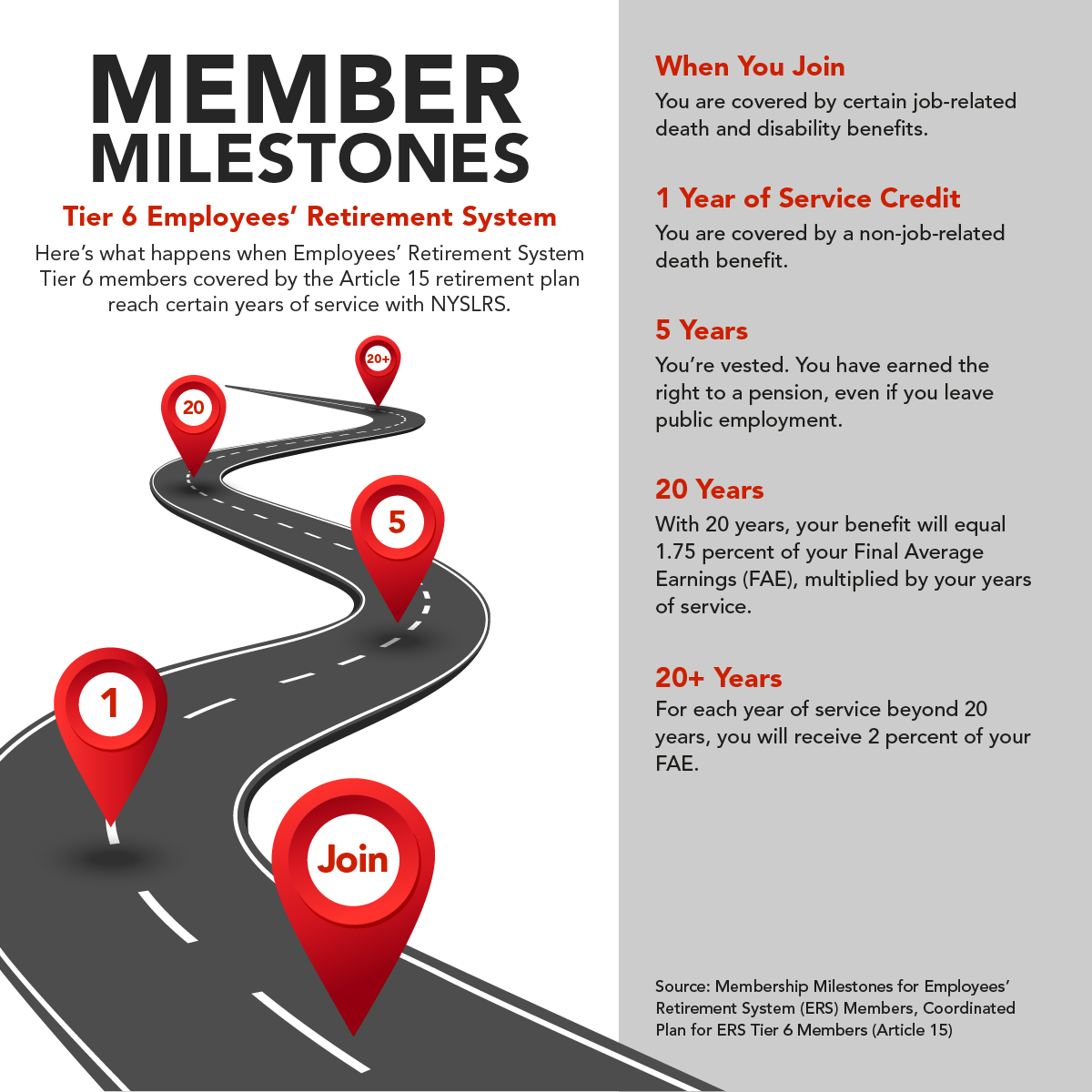
Major Milestones for Tier 6
Here are some important milestones for Tier 6 members in the Article 15 retirement plan:
- With ten years of service credit, you can apply for a non-job-related disability benefit if you are permanently disabled and cannot perform your duties because of a physical or mental condition.
- With ten years of service credit, your beneficiaries may be eligible for an out-of-service death benefit if you leave public employment and die before retirement.
- Ten years also marks the point when you are no longer able to withdraw your membership and receive a refund of your contributions if you leave public employment.
- You are eligible to retire once you are age 55 and have five years of service credit. However, for most Tier 6 members, there would be reductions to your benefit if you retire before age 63.
- You can retire with full benefits at age 63.
- If you retire with fewer than 20 years of service, your pension will equal 1.66 percent of your final average earnings (FAE) for each year of service.
- If you retire with more than 20 years of service, your benefit will equal 1.75 percent of your FAE for each year of service.
- Then, for each year of service beyond 20 years, you will receive an additional 2 percent of your FAE.
Note: The law limits the final average earnings of all members who joined on or after June 17, 1971. For example, for most members, if your earnings increase significantly during the years used in your FAE, it’s possible that some of those earnings may not be used toward your pension. The specific limits vary by tier. Visit our Final Average Earnings page for more information.
The amount of your pension also depends on several factors, including your years of service credit and your age when you retire. Most members can estimate your pension in Retirement Online and enter different retirement dates to see how those choices would affect your benefit. As of April 9, 2022, Tier 5 and 6 members only need five years of service credit to be vested. If you are a Tier 5 or 6 member with between five and ten years of service credit, you can contact us to request a benefit estimate.
ERS Tier 6 Special Plans
Some public employees, such as corrections officers or deputy sheriffs, are in special retirement plans and can receive a pension after completing 20 or 25 years of service, regardless of age. If you are not in the Article 15 retirement plan described above, you should read your retirement plan publication to learn about your plan’s milestones.
Our Find Your NYSLRS Retirement Plan Publication tool can help. To use it, you just need to know your retirement plan code. You can find your code in the ‘My Account Summary’ section of your Retirement Online account homepage or on the second page of your latest Member Annual Statement. You can also use the new tool to search for your plan publication by retirement system, tier and occupation type (uniformed or non-uniformed).



